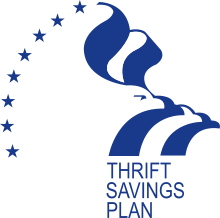 On the one hand, you have a mortgage and a mortgage payment, and on the other, you have your TSP, which you’ve built up through hard-earned savings over time. Retirement is looming, and the thought of owning your home outright and having no mortgage payment is awfully attractive. The thought has crossed your mind that you could use some of what you’ve saved in your TSP to pay off your mortgage, but should you?
On the one hand, you have a mortgage and a mortgage payment, and on the other, you have your TSP, which you’ve built up through hard-earned savings over time. Retirement is looming, and the thought of owning your home outright and having no mortgage payment is awfully attractive. The thought has crossed your mind that you could use some of what you’ve saved in your TSP to pay off your mortgage, but should you?
Usually, the answer is no.
The biggest reason not to use your TSP is typically taxes. If you’ve contributed to the traditional side of the TSP with pre-tax dollars, you’ll need to pay tax on the withdrawal of those funds. So, were you to withdraw $50,000 to pay down your mortgage, the IRS would treat that as $50,000 in income and tax it accordingly. If you’re in a 24% tax bracket, you’d owe another $12,000 in Federal tax, and you might also owe state tax depending upon the state in which you live.
To make matters worse, if you haven’t separated from service and are under age 59 1/2, you’d owe an additional 10% early withdrawal penalty. If you have separated from service and are 55 or older, there is no early withdrawal penalty for the TSP, but you will still owe income tax.
Taxes on withdrawals from the Roth are less onerous. Since you’ve already paid tax on your Roth contributions, there is no tax on a withdrawal of contributions. There is, however, tax on the earnings of those contributions unless (a) 5 years have passed since January 1st of the year in which you made your first Roth contribution, AND (b) you are age 59 1/2 or older, permanently disabled or deceased.
Because of the tax liability associated with withdrawals, a loan might make more sense for you if you are still working for the Federal Government. Note that if you’re planning on using a loan to pay off your mortgage, you’ll need to look to the general purpose loan, and we outline details on that and general information on loans below.
 Taking a Loan
Taking a Loan
There are two types of loans available from the TSP – a general purpose loan and a residential loan. The primary difference between the two loans is the repayment period – the general purpose loan must be repaid within five years, while the residential loan must be repaid within 15 years. You have to provide documentation for a residential loan so that TSP administrators can confirm you will use funds for purchasing or constructing what you intend to be your primary residence.
The amount of a loan varies, but at a minimum, you must borrow $1,000, and at a maximum, you can borrow $50,000, though in many instances, the maximum amount you can borrow is lower (you can find more details here). The advantage of taking a loan is that assuming you meet the repayment terms of the loan, there is no tax due on loans taken from the TSP. While you do pay interest – which is based on the G Fund rate when your loan is processed – you pay the interest to yourself as both interest and principal payments are redeposited in your TSP account.
The biggest downside to taking a loan is the opportunity cost of not being invested. As an example, assume you took out a loan for $25,000, and to generate the cash for the loan, you sold $25,000 you had invested in the C Fund. If the S&P 500 – which is the index the C Fund tracks – has a particularly good year and returns 30%, you’ll lose out on $7,500 in growth (unless you
immediately began reinvesting your loan repayments in the C Fund). Beyond opportunity cost, if you find yourself in a situation in which you can’t repay the loan, any amount you default on is treated as a distribution and subject to tax and penalties as outlined above.
Given the taxes and potential penalties associated with most TSP withdrawals and the opportunity cost of taking a loan, it generally doesn’t make sense to look to the TSP to pay off your mortgage. With interest rates at record lows, refinancing might make sense or you could accelerate the payoff of your mortgage by making extra payments. If, ultimately, you do still decide to use your TSP balance to pay off your mortgage, make sure you’re aware of the cost of doing so.




 Taking a Loan
Taking a Loan